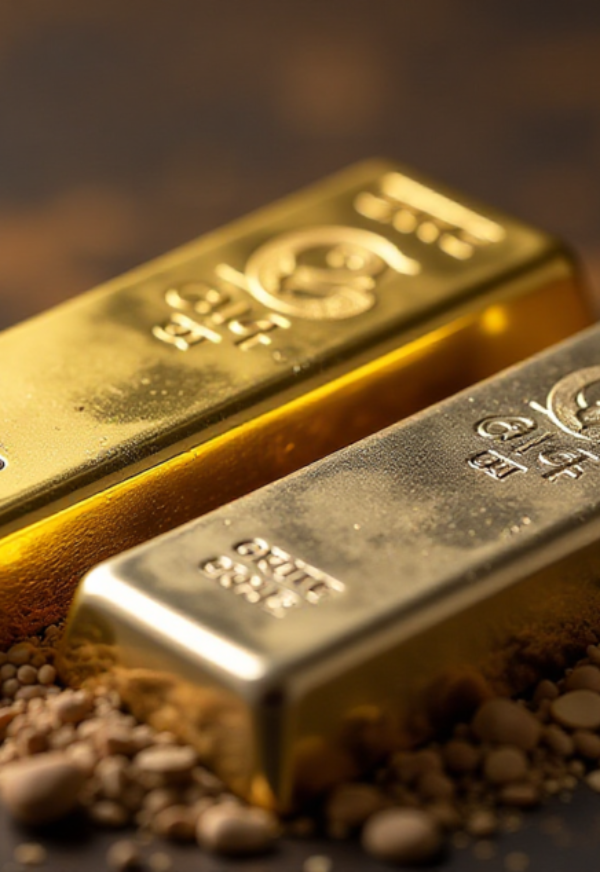Gold Prices Today: Analyzing the Impact of Rising Inflation on Gold Investment
For centuries gold has been viewed as a safe-haven asset, especially amidst financial turmoil. With inflation on the rise, investors typically flock to gold as a means of protecting their wealth against debasement from fiat currencies. This is particular apt at the moment given how high we think inflation rates will go again against which gold can protect.
A careful monitoring of how and why rising inflation affects gold investment can provide potential insights that are crucial for all existing as well new investors.
Gold and Inflation: A Relationship
For that gold has a long time reputation of being good store of value (maybe not the best one ) but over history dollars were always backed by some amount in gold and there is only so much of it compared to paper money creation which can result into hyperinflated trillions.
Paper currency can lose its purchasing power as inflation rises but gold historically maintains or increases value. That is because gold has a real intrinsic value as it is not an imaginary representation like fiat currencies can be which slow down to inflation and the increase of money supply by the central banks.
Once inflation picks up, money loses purchasing power so investors gravitate towards assets that can hedge against this depleting of value. The price of gold in particular often benefits from this, as it is perceived to be a consistent and lasting store of wealth. When inflation rates are high, demand for gold may go up with price.
Estimation of the Trend in Inflation Across Time and How It Affects Gold Prices
Over the last year, as governments around the world have responded to massive supply chain disruptions and increased spending spurred by COVID-19 with unprecedented levels of monetary easing, inflation has moved higher on central bank agendas worldwide. Corn prices surged after the government’s weekly crop-condition report showed only 62% of the corn in good or excellent condition, down from last week and almost a third less than this time last year.
Prices also got a lift on traders’ fears that inflation is returning to the economy as surging commodity costs spill over into other areas of life not touched yet by rising price tags for goods like gasoline and cereal. Scant Rain Threatens Harvest More Analysts Predict Corn RallyPhotosgetting ready.
The worst drought damage (show all) squeezing away Increasingly sunny skies are getting scarcer Drop Dead Gorgeous Former German supermodel Tai…most popular stories. Therefore, Gold price has been extremely volatile. By way of example, in times of high inflationary pressures, the price of gold was driven up as investors ran to this metal.
Nevertheless, the gold and inflationist dynamic is not without its quirks. Interest rates, currency strength and geopolitical risks are also key to driving the price of gold.
Gold as a Protection Against Inflation
Either way gold also performs well during periods of inflation, primarily because investors seek it out as a long-standing defense against this; Historically, gold retains its long-term value and even increases in price during high inflation periods. This renders it an appealing option for anyone looking to hedge their wealth.
That said, gold is an effective hedge against inflation but it performs differently in different time windows and under the influence of market conditions. Gold prices are affected by many things in the short term, such as interest rates and US dollar strength. For example, higher interest rates central banks can combat inflation by raising the opportunity cost yield no income assets such as gold storage to increase downward pressure on actual prices of gold.
Times like These Investment Strategies
Under the current economic environment, gold has become very hot topic for many investors how to invest in gold as hedge of inflation. Diversification is still the name of the game, with gold frequently serving as a component in an overall investment portfolio that provides exposure to various asset classes such as equities, bonds and real estate.
Additionally, investors can learn the many means to invest in gold from buying physical gold or Open Gold Funds as well investing in companies that mine form this precious yellow metal. Both options have their own share of pros and cons, choosing one will depend upon the investment goal & risk appetite each investor has.
Conclusion
Skyrocketing inflation has underlined the significance of gold as a hedge against economic uncertainty. Despite golds long history as a consumer spend hedge, investors should take in the greater economic environment and potential market conditions before executing investments.
As you can see, if investors are to be better placed in order to protect themselves from weaker factors and develop strategies that will take advantage of the potential reopening thematic trade post vaccination II; careful consideration has to go into just what future upside is left for gold.
